Even Zebras Get Pedicures!
April 28, 2022
April 28, 2022
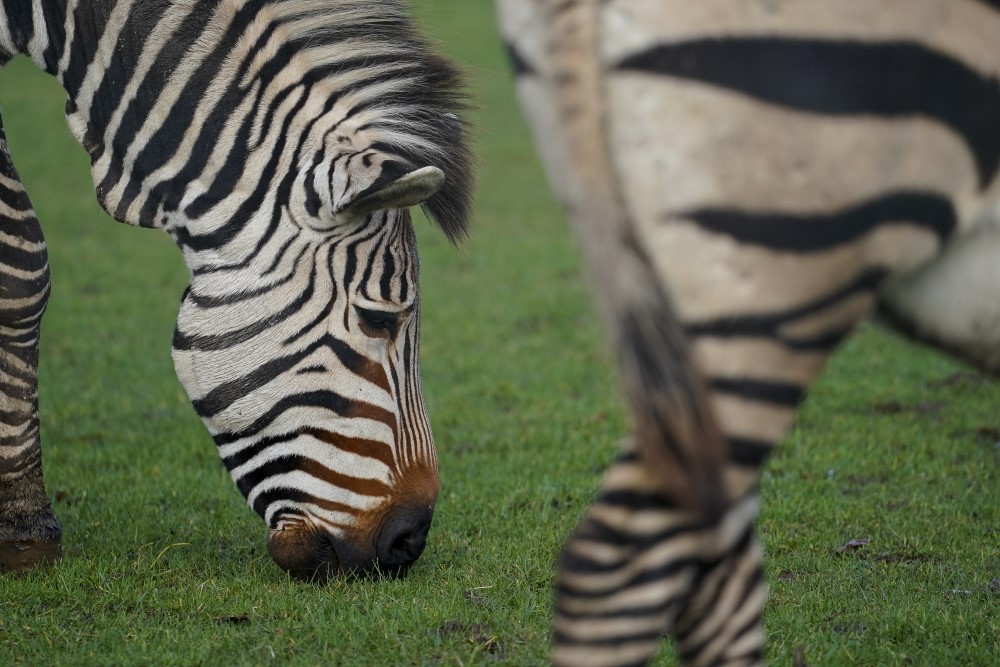
Our Hartmann’s zebras have exceptionally strong hooves – they are designed to walk across mountains! This strength, combined with milder winters, which means the ground becomes less tough, can make it very difficult for these hooves to wear down naturally. When one of our Hartmann’s zebras needs some hoof trimming, my team calls on the help of our local farrier. Unlike our farrier’s usual patients, our zebras are wild animals and not pet horses! So, to make it safe for our farrier to do his work, we must anaesthetise them.
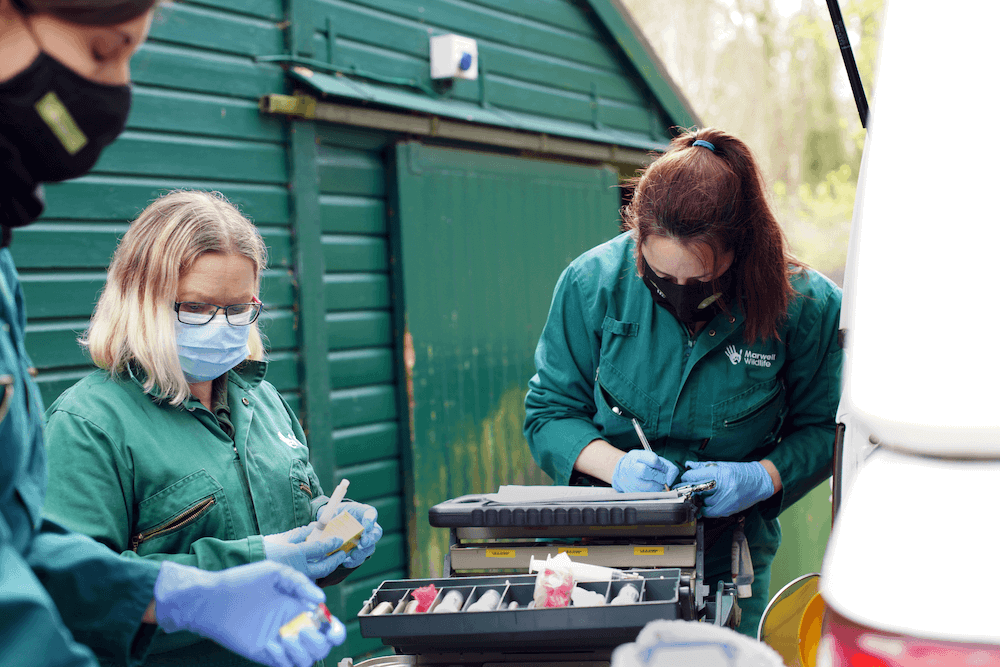
Before any procedure, my team needs to write up a procedure plan and get prepared! We write up these plans a few days before the procedure and share them with everyone involved. It is important that we all know what medications and equipment we need, as well as what jobs we all need to do. This is so that the procedure runs smoothly and can be completed safely and as quickly as possible.
On the day of the procedure, our zookeepers will put a huge bed made from straw in the zebra house. This is to make sure it is comfortable when it is lying down under anaesthetic. When the farrier gets to the zoo, we load everything into our car and drive to the zebra house. We do have a veterinary hospital on-site, but it is not possible for a lot of our larger animals to come to us!
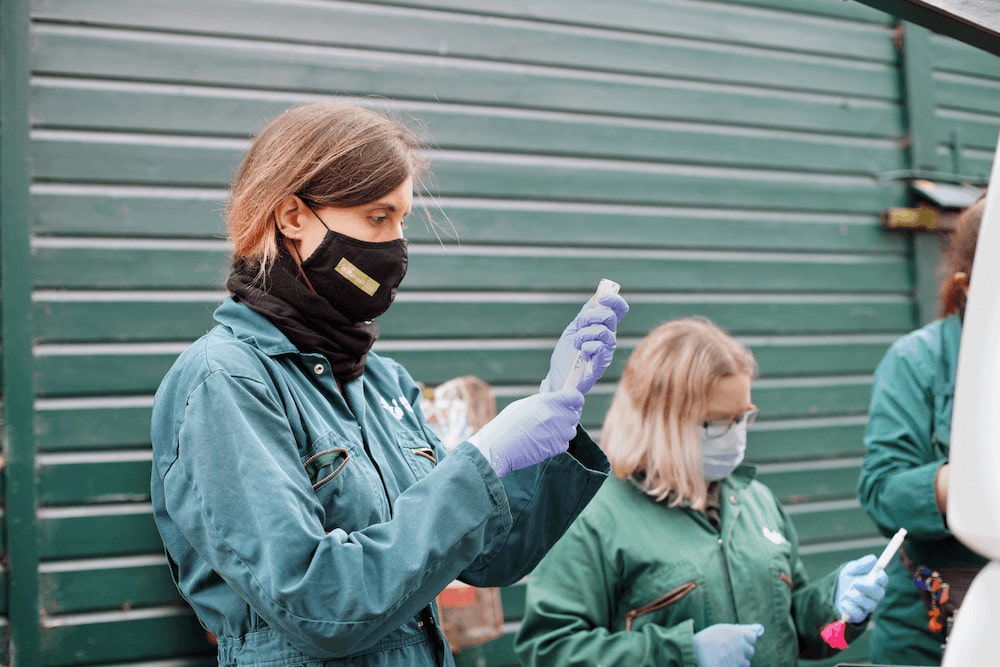
After we have all read the plan one final time, we begin preparing the anaesthetic medication. We put the anaesthetic into a plastic dart and use a dart gun to deliver the medication into one of their large back leg muscles. A lot of our animals are trained to accept hand injections, which means that we don’t need to use a dart gun, but the Hartmann’s zebras aren’t there just yet! Once the medication has been delivered, the zebra is monitored by one of the veterinary nurses and a keeper, whilst everyone else unloads equipment from the car.
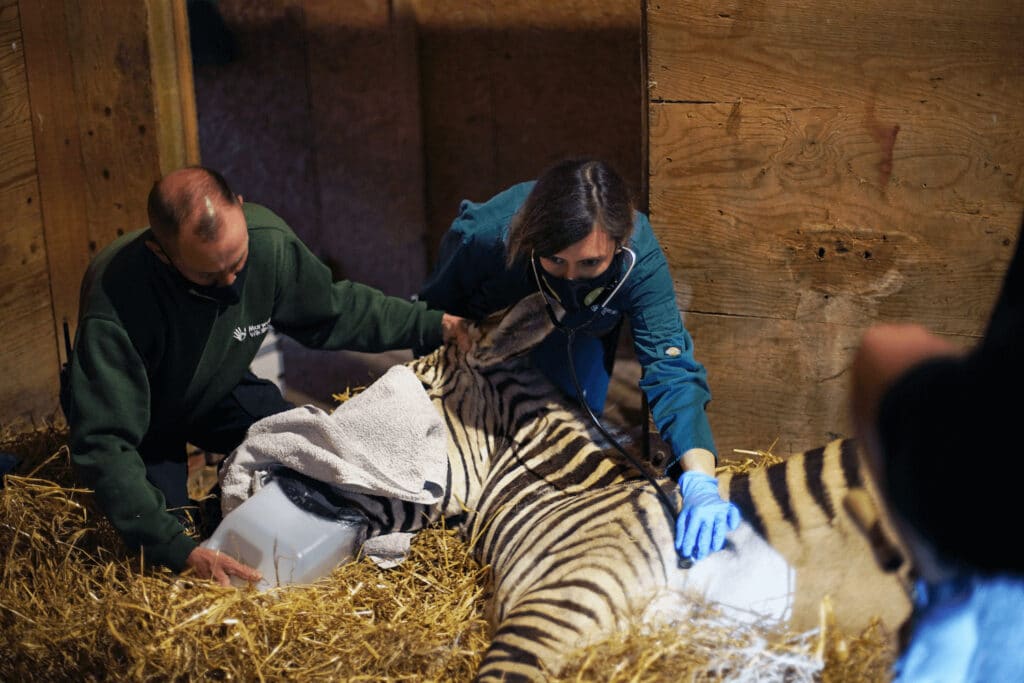
Once the zebra is under anaesthetic, we cover its eyes and ears and speak quietly, to make sure there are no loud noises to wake it up! A vet will help the veterinary nurse monitor the anaesthetic, to make sure the zebra remains asleep enough for our farrier to do his work. They can assess the depth of the anaesthetic by counting the number of breaths the zebra takes and its heart rate. The vet nurse can count this using a stethoscope to listen to its heart or by putting a special probe on its tail to detect its pulse.
It is especially important that the vet, vet nurse, and farrier can communicate well to keep each other and the zebra safe. If any of them start to feel some muscle tension from the animal or notice a change in heart rate or number of breaths, the zebra may need some more anaesthetic. It is also very important that we keep the zebra warm whilst it is asleep, as it will take longer for it to wake up if it is cold. We can keep them warm by covering them in blankets and even using hot water bottles!
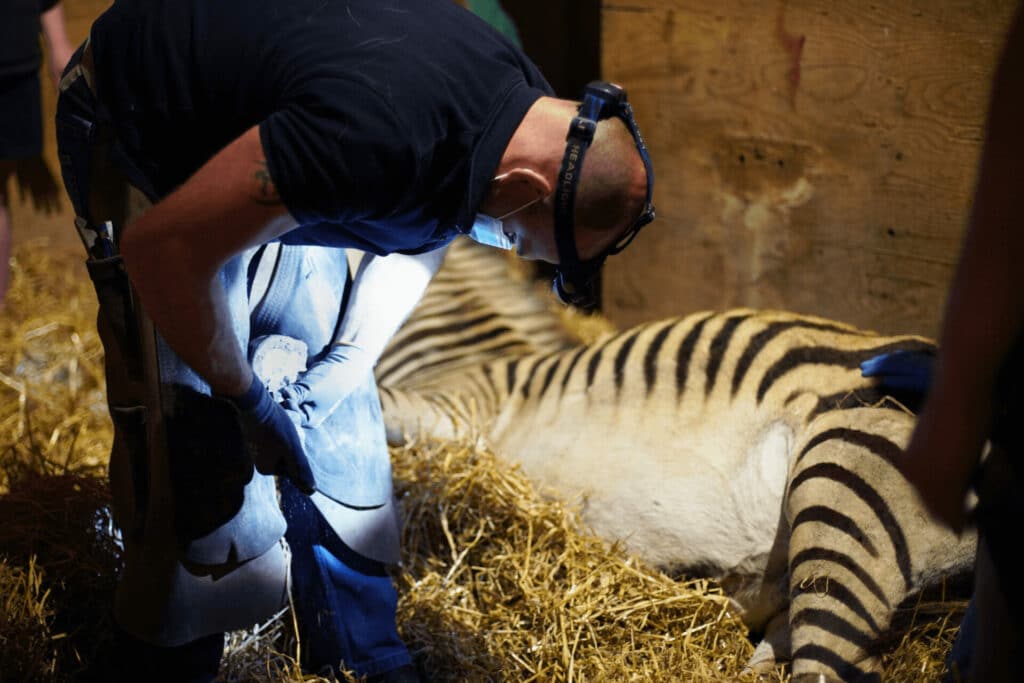
Unlike with pets, we cannot just walk up to our zebras and check them over! So, whilst the farrier is doing his work, the other vet will perform a complete health check on the zebra. We do not anaesthetise them very often, so when we do we take the opportunity to find out as much about them as we can.
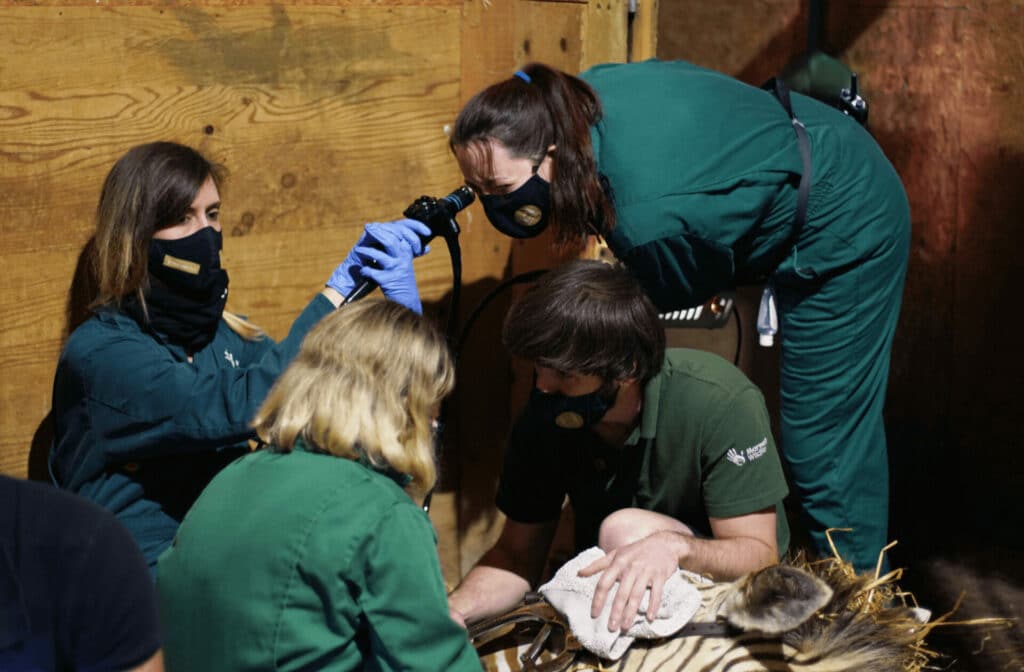
As part of the health check, we use a special camera to check the zebra’s teeth. Their mouths are very long and narrow, so it is very dark in there which makes it difficult to see! If the zebra is an older individual, we also take a blood sample from a vein in the neck, to check that all its organs are working well.
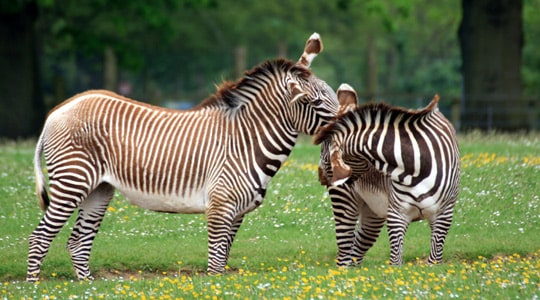
Once the procedure is complete, we inject the zebra with some pain relief and then we inject another medication that wakes the zebra up. We then have to remember to take the blindfold off and take the plugs out of its ears! We then stay as quiet as possible, so that the zebra stays calm. The nurse and a keeper will watch the zebra whilst it wakes up to make sure everything is ok. We leave it in its padded stall until it is able to walk around, before letting it go back to the herd.
By Dr. Sarah-Jayne Smith, Acting Veterinary Services Manager